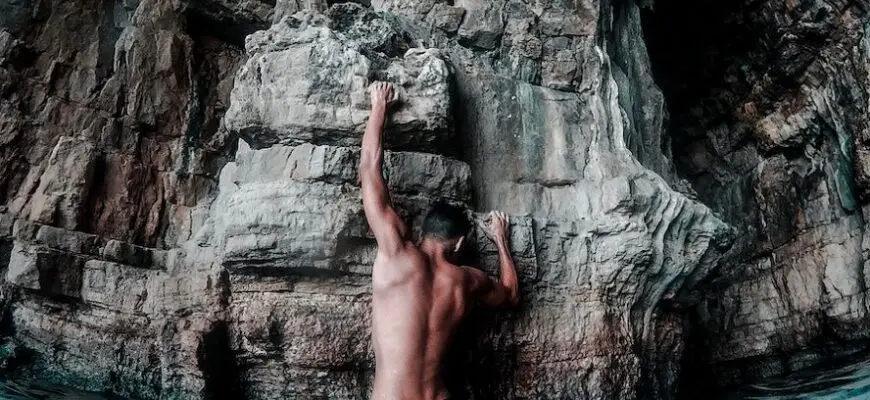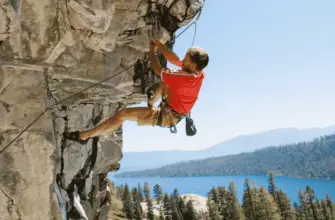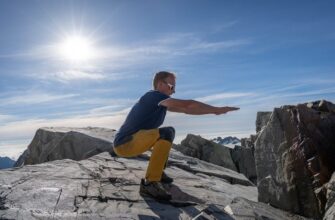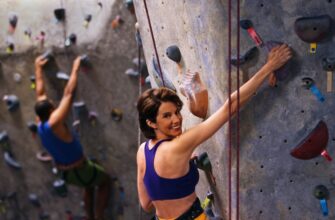Rock climbing is a good choice, If you want to try something new in your workouts. You could be wondering if climbing can substitute fitness, whether it’s because you want to be more active or because you’re bored at the typical gym and want to switch things up by attending a climbing gym. This article examines the key muscles that climbing develops, and answers the question “does rock climbing build muscles?”.

- What is Rock Climbing?
- Does Rock Climbing build muscle?
- How much muscle can you gain from rock climbing?
- Where does rock climbing build muscle?
- The Upper Body Muscles
- Upper body muscles located on the back
- The Core muscles
- The Lower Body muscles
- Can rock climbing replace the gym?
- Climbing and heavy weighting?
- Why are rock climbers so ripped?
- Rock Climbing advantages
- Does rock climbing give you a good body?
- Rock Climbing Disadvantages
- Muscle Imbalances during Rock Climbing
- How to fix or avoid muscle imbalances?
- Conclusion
What is Rock Climbing?
Climbers engage in rock climbing when they scale or traverse vertical rock faces or man-made rock walls.
You have to climb to the top of a rock formation or follow a set path to its conclusion without slipping or falling off.
Climbers must rely on their strength, stamina, agility, balance, and mental fortitude to successfully complete rock climbing routes. Climbing may be risky if you don’t know how to do it properly or how to use specialist climbing equipment. Several distinct techniques and sub-disciplines of rock climbing have developed as a result of the vast diversity of rock formations across the globe.

Does Rock Climbing build muscle?
Like many body-weight workouts, rock climbing builds muscles and is a full-body workout. The midsection, forearms, shoulders, and triceps are the muscles that are most frequently used when climbing.
Typically, climbers report seeing improvements after one to two weeks of training. To grow muscle more quickly, many seasoned climbers combine weight training with their climbing workouts.
Whether you prefer bouldering or route climbing, climbing can help you develop muscle in specific places of your body, which will enable you to climb more effectively in the future. Your forearms, back, arms, and core will all undergo the greatest change.

How much muscle can you gain from rock climbing?
Your body will develop muscle in all the different muscle groups as a result of the rock climbing you practice.
Once grown, these muscles will be used in the future to enhance performance and ascend for more challenging challenges.
Your forearms, arms, back, and core muscles will change as you have more experience rock climbing.
Additionally, because rock climbing requires the use of the complete body, it is simple to determine which major muscles are active. Rock climbing builds muscle in all the groups. To give you an idea of how our bodies function during rock climbing, though, we’ve focused on the main muscles in the list below.

Where does rock climbing build muscle?
The Upper Body Muscles
When performing rock climbing exercises, upper body and primary arm muscles will be completely utilized. The main arm muscles used for rock climbing are the forearm flexors in particular.
The upper body muscle in this area of the body is utilized to open and close your hands around an object.
Since they are the smallest muscle groups, they might tire very quickly. However, as time passes and the climber acquires more climbing skills, the fatigue will simply begin to disappear.
As new climbers develop their technique, the feeling of the pump in the forearms after rock climbing should start to lessen.
In addition to utilizing their entire bodies and their arms to lift themselves up the wall, more experienced climbers also depend heavily on their muscular lower bodies to push themselves up the wall as they climb.
Climbers naturally use their biceps to keep their grasp on the wall, especially on challenging or overhanging routes.

Upper body muscles located on the back
The latissimus dorsi, or lats, are a group of sizable muscles on the side of your back that resembles wings. They are used to pull the body upward and toward the next handhold when performing a pull-up.
You hold your torso close to the rock face using your rhomboids, which retract your shoulder blades.
Finally, a shoulder muscle called the anterior deltoid pulls your upper arm back so you can perform those large, reaching movements on the wall.
In order to lift your torso up toward your hands and keep your chest close to the wall as you climb, your lats, rhomboids, and deltoids must all work together.

The Core muscles
The most undervalued set of muscles in terms of significance for the rock climber is the center body, sometimes known as the core. Actually, during rock climbing, the stomach muscle acts as a pacifier. This indicates that the body’s stability on the rock is maintained by the abdominal muscles.
It would be quite difficult to keep your body stable on the rock when climbing without the abdominal muscles.
Your core needs to contract while you’re practically hanging upside down from a steep roof in order to maintain pelvic alignment with the chest.

The Lower Body muscles
As they gain experience and acquire new skills and methods, novice rock climbers will depend less on their upper bodies to propel them higher. These climbers will learn how to exert upward force with their whole lower body.
When shifting from one position to the other, the quadriceps, which are the four large muscles located in front of the thigh, can be used to lift the lower leg.
The soleus and gastrocnemius are the two muscles that make up the calf.
They also stop your heel from slipping when you are sitting on a very small ledge and all that is holding you in place is the tips of your toes or the edge of your foot.
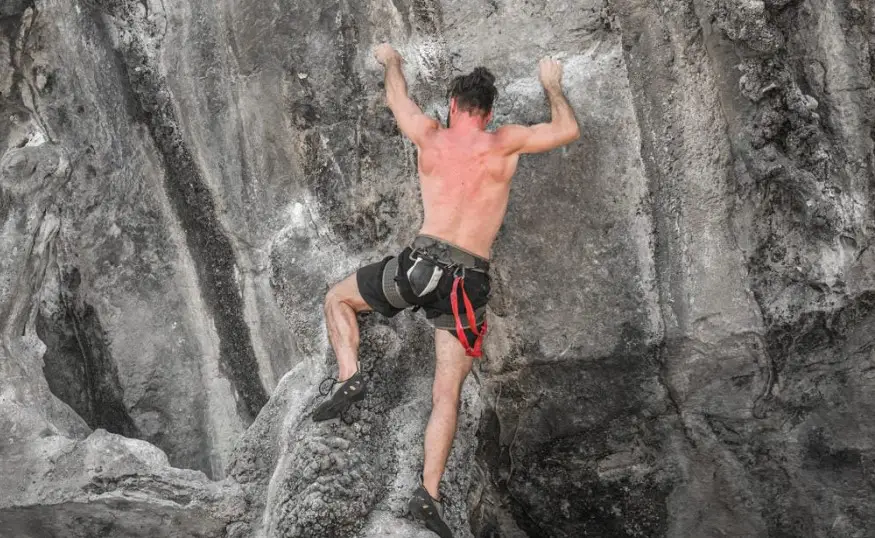
Can rock climbing replace the gym?
People often become interested in climbing because they want to be more active but don’t want to perform traditional push-ups or pull-ups.
Climbing might take the place of working out in the gym, depending on your goals.
Climbing is a fantastic aerobic workout and an excellent substitute for much other weight training.
However, additional weightlifting will still be important if you want to develop large muscles or be able to bench and squat double your weight.
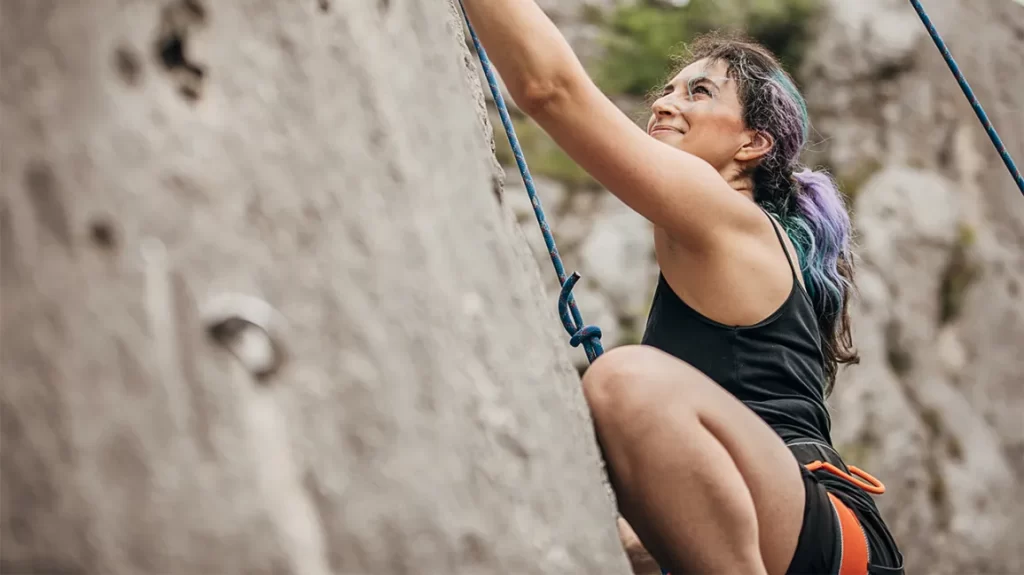
Climbing and heavy weighting?
Climbers commonly question whether adding weighted gym sessions as a supplement is a smart idea as they continue to train or reach a plateau.
Weighted training as a supplement to the climbing session is a terrific strategy to increase strength and muscle mass more quickly. Since you should take one or two days off from climbing each week, this is extremely crucial.
In reality, climbing with climbing drills three times per week and weight training twice per week is a typical schedule for climbers.
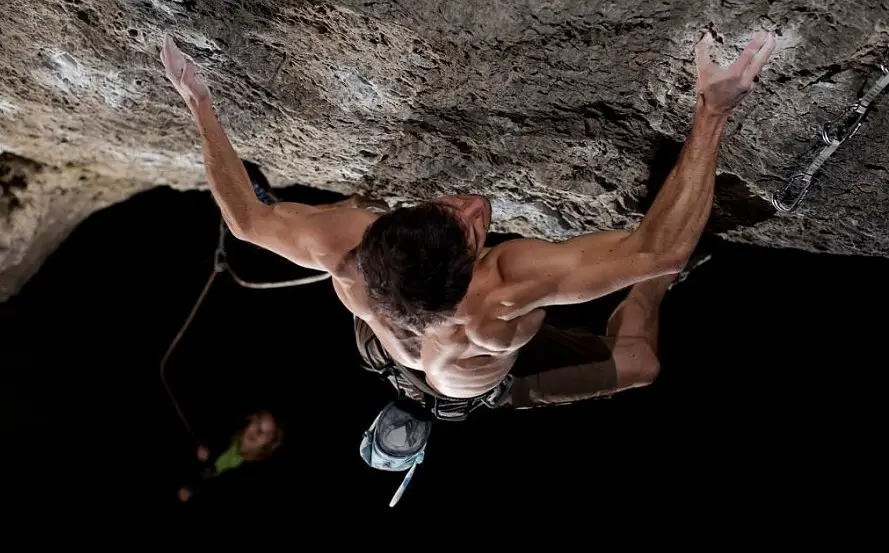
Why are rock climbers so ripped?
You may have observed different rock climber body types if you have visited a climbing gym, or a crag, or have just watched climbing movies.
While some elite climbers are typically fairly slim, if not underweight, with low percentages of body fat and body mass, other elites appear to be in good form but aren’t too muscular or ripped.
Some climbers, however, nonetheless maintain a slender physique while appearing stronger and more muscular with broad shoulders and well-defined abs, since it is a strength training process.
Rock climbers are more muscular and have lower body fat percentages than the general population.
Professional climbers don’t really think about how to build greater muscle mass or how their muscles look. They favor achieving the strength-to-weight ratio that enhances performance.
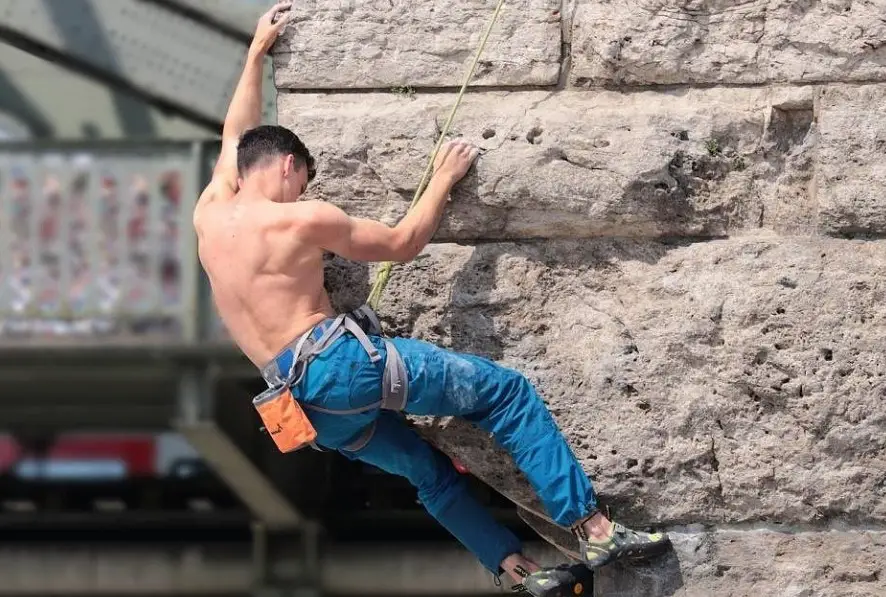
Rock Climbing advantages
Climbers typically possess an athletic physique as opposed to the bulkier stature of a bodybuilder. Long, slim, well-defined muscles, especially on the upper back, shoulders, and stomach, are the hallmarks of a rock climber’s physique.
But more significantly, you get to benefit from all the health advantages of rock climbing in addition to having a climber’s body.

Does rock climbing give you a good body?
Both the upper body and lower body muscles are worked out by rock climbing.
You can use it to build muscle and decrease fat.
Replaces full-body workout.
Your range of motion and flexibility will grow, keeping your joints safer throughout daily motions.
In a single workout, you can increase both your strength and endurance.
Your grip power will improve.
Strength training.
Rock climbing not only improves problem-solving skills but also lowers stress levels because it requires you to be present and face your concerns. The increased awareness of your body and mind is another important advantage.

Rock Climbing Disadvantages
Muscle Imbalances during Rock Climbing
It is simple to unintentionally rely on one half of your body more than the other when engaging in the physically demanding sport of rock climbing, which can cause bothersome muscle imbalances that could eventually result in more serious injuries.
The next time you climb, consider how you just use your right foot to ascend to the next hold while reaching with your right hand.
With your right hand, your death grips the rock as your left-hand clips swiftly. As you position the number 2 cam in the splitter crack, you lock off your right arm.
Simply by failing to pay attention while climbing, it is very simple to unintentionally produce a lopsided construction.
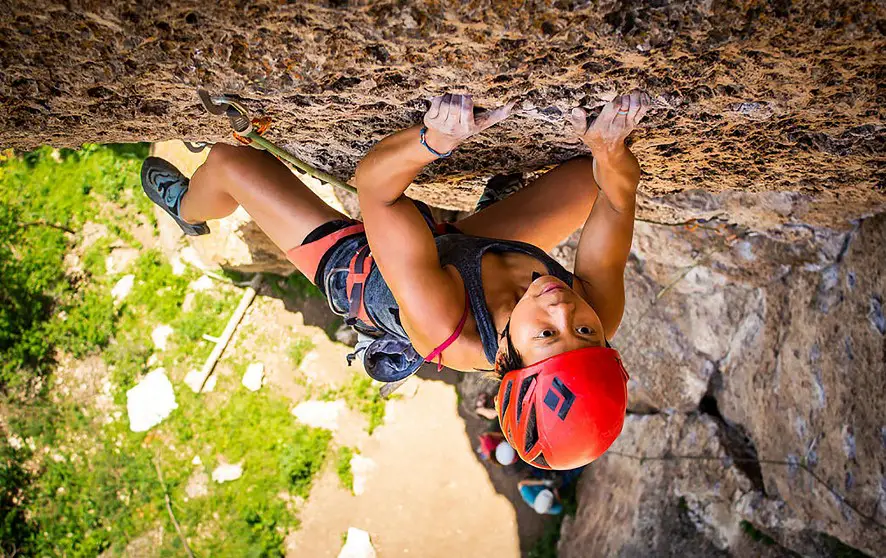
How to fix or avoid muscle imbalances?
Follow the next questions and be aware of when you’re favoring one side over the other when on the wall to avoid or correct muscular imbalances and become a stronger, more balanced climber!
Do you currently favor a stronger limb because of previous injuries that didn’t heal properly?
Do you frequently solely use one arm to lock off or the other to clip, even if it requires crossing your body?
Hire a personal trainer or ask a close friend to keep an eye on you as you climb. Minor imbalances are frequently obvious to an impartial observer before we are even aware of them in our own bodies.
You can also request that they record you while you are climbing or while you are engaging in activities connected to climbing, such as push-ups and pull-ups. By doing this, you’ll be able to see which side you’re leaning toward and fix it afterward.
After determining your specific imbalance, the following stage is to strengthen your entire base.
You must first lay a strong foundation in your body that you can then build upon if you want to remedy a muscular imbalance.
Learning the proper form for workouts is your first task if you want to avoid aggravating current muscle imbalances and avert future imbalanced muscle development.
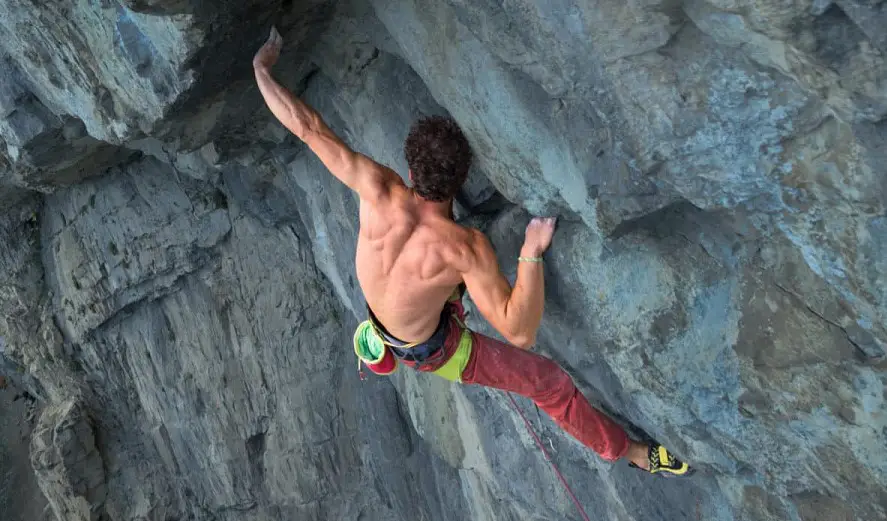
Conclusion
As was mentioned at the beginning, a new climber’s muscle mass will normally increase quickly if they climb frequently and in large quantities throughout the first three to six months of their climbing career.
There is insufficient proof that professional climbers who only climb as part of their training regimen continue to build muscle at any noticeable rate.
After the first surge in muscle mass, a climber’s body composition will often not change much more unless they begin weight training in addition to their climbing routine.
However, as long as you feel fantastic about yourself on the inside, it doesn’t really matter how you look on the outside when climbing, isn’t that right? Rock climbing makes you stronger and increases muscle, but strength to weight ratio is more significant than excessive strength and large muscles.
When climbing, all of the major muscular groups are exercised.
As with any sport, maintaining good physical condition, allowing your body to rest when necessary, and paying attention to how you climb will help you prevent developing muscle imbalances. Stretching and strength training should be a part of your workouts if you want to ensure injury avoidance and performance enhancement.
There is no doubt that rock climbing is a fantastic method to improve health and learn useful skills while still having fun if the conventional gym is not your thing. Additionally, you may always strike a balance between being physically strong and climbing hard if pushing grades is not your primary concern.

